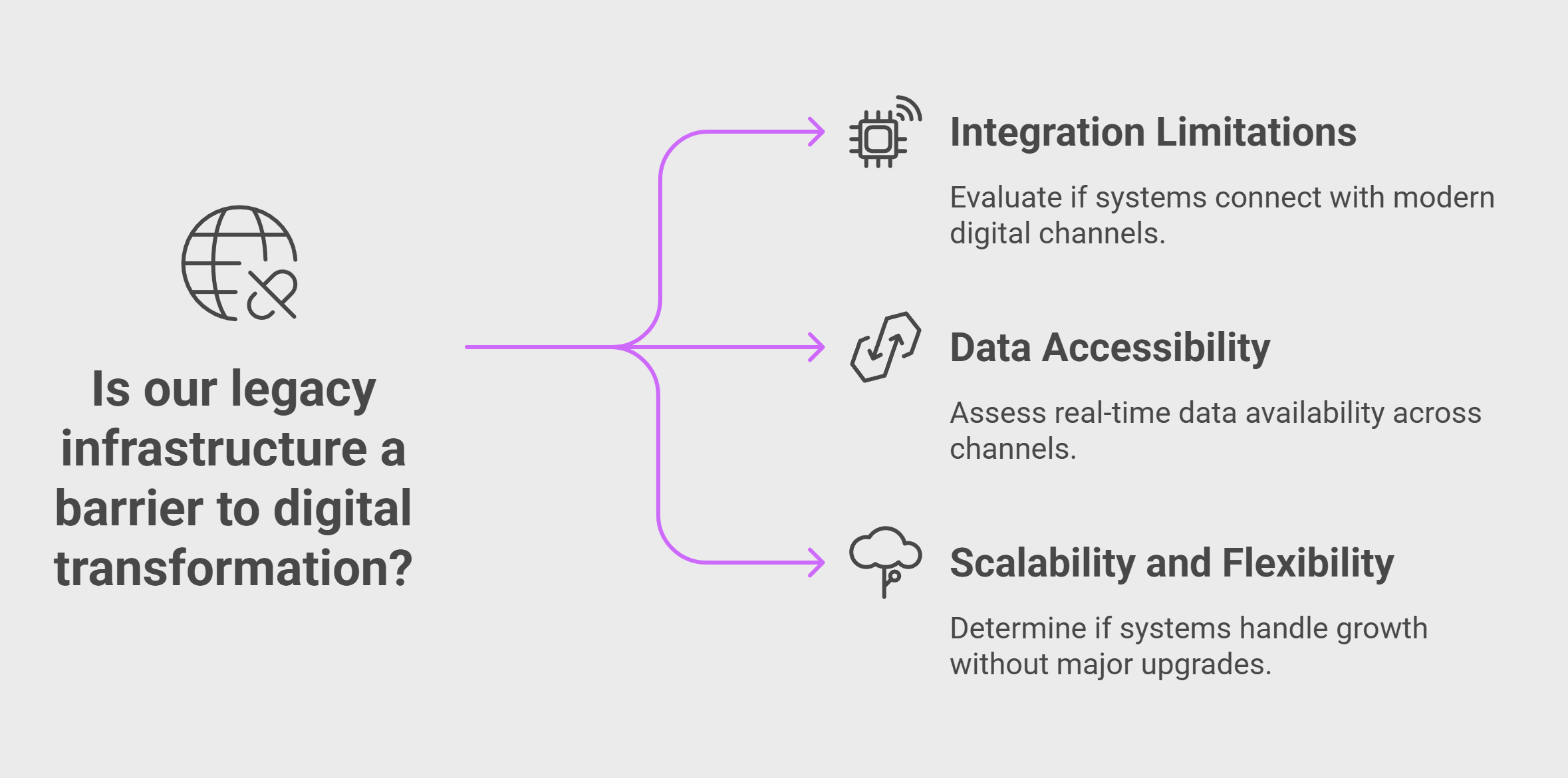
As a bank manager, you know it’s rare to win over a customer on the first interaction. True loyalty develops over time by being available wherever your customers are and whenever they need support.
That’s why having an omnichannel banking system is essential. In this blog, we’ll explore what omnichannel banking is, how banks can build a unified customer experience across channels, and how to assess whether your legacy systems can support this strategy.
Omnichannel banking is a strategy where banks provide a seamless and consistent experience across all customer interaction channels, such as mobile apps, websites, ATMs, call centers, and physical branches. Customers can then access banking services, perform transactions, and receive support through all these channels.
Below is a step-by-step plan you can begin tomorrow to build a unified customer experience across channels.
First of all, you need to figure out your main objective for providing an omnichannel customer experience across all channels.
To do that, host a 60-minute kickoff meeting with key stakeholders. Invite the head of CX, contact center manager, IT lead, product owner, compliance representative, one branch manager, and one digital channel owner. The main focus of the meeting is to confirm the objective, assign roles, and set up initial measurement.
Key items to cover in the meeting:
Next, you need to figure out what actually exists in the current workflow. Assign a team member to complete an audit in two to three days on all active channels. The key tasks during the audit include:
Once you understand your current channels, it’s time to map how customers move across them. This helps identify where handoffs happen, where context is lost, and where improvements are needed to create a seamless experience.
Choose two priority customer journeys and document each step. For example, transaction disputes starting in the app and escalating to voice support, or a loan application that begins in web chat and concludes in-branch.
Next, specify the customer data and context required at each handoff to ensure continuity and reduce friction. And finally, highlight potential gaps, delays, or friction points to address in the next steps of integration and platform deployment.
After mapping customer journeys, the next step is to ensure you have the right data available for a seamless experience across channels. This involves identifying where the authoritative customer information lives and how it can be shared safely with agents and automated systems.
Key actions in this step include:
To deliver a seamless omnichannel experience, you need a platform that brings all customer interactions together and supports both human agents and AI. You can choose a solution like Mevrik, an AI-powered customer engagement platform, or similar tools that provide:
When selecting a tool, assess its cost, API capabilities, security, and compliance fit for each platform. Also, keep in mind how the platform will integrate with your existing channels, CRM, and core banking systems.
Once your engagement platform is in place, start with a pilot for a limited product line or a selected set of channels. This allows you to test workflows, measure results, and make improvements before a full-scale rollout.
Key actions during the pilot:
Measure performance weekly during the pilot. Like:
Many banks rely on legacy systems that were not designed for the speed of modern banking. Like you will be often struggling to quickly sync customer information across platforms and respond instantly to inquiries.
To assess whether your legacy infrastructure is a barrier, evaluate these factors:

If the answer is “no” to one or more of these questions, legacy systems could hold your bank back. To overcome these challenges while avoiding a complete software overhaul, you can use:
You now know the benefits and steps to create a unified omnichannel banking experience. Start by mapping priority customer journeys and linking the data to create continuity and personalization that you need across channels.
Once that foundation is in place, you can connect using an engagement platform like Mevrik to save time and reduce operational friction. Mevrik brings email, chat, social, and in-app conversations into a single inbox. That means fewer repeated contacts, faster resolution, and a clearer view of channel performance.
Sign up for a free Mevrik demo today to evaluate connectors, security, and fit, or do a 14 trial to run a short pilot with your priority customer journeys.
Ready to thrive on the customer experience and increase sales & support?
